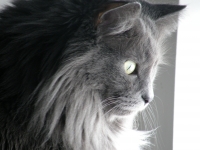You've used Find and Replace in Microsoft Word. You probably think it's so easy that you know it inside and out. You type one thing and replace it with something else, what more is there to learn? Well how about when you are trying to find things that might not all be the same? What do you do then? You play with some of the lesser used advanced features of Find & Replace, that's what! Here's just a few, but there's plenty more where these came from.
To see these options if they aren't showing, click the More button in your Find & Replace window.
Use Wildcards - This checkbox allows you to use a question mark or asterisk to indicate that it could be any letter. A question mark finds a single letter. If you wanted to find any two letters in a row, you would use two question marks. Three letters? Three question marks. An asterisk finds a series of letters, regardless of the number of letters involved. Therefore, s?ng would find sang, sing, song, sung. s*ng would find those words plus string, but it could also highlight from the first occurrence of s through the next occurrence of ng (which may not be what you want). Word does not allow you to select "whole word only" as an option when using wildcards (or any special characters for that matter). String could also have been found with s???ng.
************************
Not looking for any specific text at all, but want to get rid of formatting in your document or change all references of Arial font to Times New Roman in a document that uses multiple fonts? Maybe you have one of those bosses who told you to use green text on every other line in this 2314 page long document, but now insists that the text be red. Perhaps that very technology illiterate boss has decided not to use track changes but instead apply yellow highlighter throughout a 100 page document whenever changes were made (though I'm sure it's only *my* helpful coworkers that do that sort of thing). No problem, you can do that kind of find and replace action too!
Find Formatting - At the bottom of the Find & Replace window, there is a button called Format. You can search for various formatting options, including font, paragraph, tab, borders, frame, and language settings. The windows that appear with each of these options will match the windows that would appear if you chose them from the Format menu. You need to make sure you have clicked in the correct box (Find What or Replace With) before you make selections. Note that as you make the selections, the options you select will show beneath the appropriate fields. Don't type any text in the Find What or Replace With fields - just leave those blank. Word will then just change the formatting without affecting the existing text. After you are done replacing your formatting, be sure to clear those fields so they don't affect future searching by clicking each field and then clicking the "No formatting" button at the bottom of the window.
************************
Have you ever copied and pasted text from an email, only to have it include all the extra tabs and spaces from the email being forwarded multiple times? You know what I'm talking about. What a pain in the neck getting rid of all that white space, because each line doesn't have exactly the same number of tabs and spaces for you to search for, right? Did you know Word's Find & Replace feature has a function to help you? Oh, yes, it does...
Find White Space - At the bottom of the Find & Replace window, click the Special button. You'll see a lengthy list of options, some of which are unique, depending on if you have clicked in the Find What or Replace With field first. One of the options that shows on the Find What list is White Space. Clicking this adds ^w to your Find What field. This will search for all white space in your text, including multiple spaces and tabs. Be sure to include a single space in your Replace With field.
************************
I can hear some of you grumbling right now under your breath about how you wish you had known about some of these features before and how you spent hours manually removing that dang yellow highlighter your boss used, etc. It's ok. We've all got to learn new things some time. Let the past go, grasshopper. Focus on the future and how much time and effort you will be saving going forward!
There's actually A LOT more that you can do with Find & Replace in Word. If you ever have to do some kind of a manual replacement action in a document, check to see if something exists in Find & Replace that can make your job easier. I could teach an entire hour long class on all the nuances available in this feature. It's incredibly powerful and I encourage you to explore it further.












